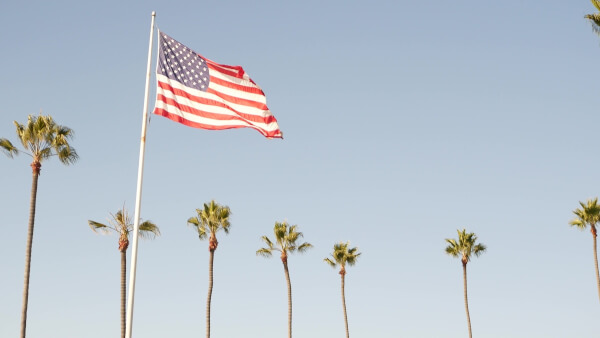5 Alternatives to Wise Business Account
Looking for alternatives to Wise Business Account? Explore platforms with cross-border payments, multi-currency management and financial flexibility.

Amazon’s marketplace owes much of its growth to third-party sellers, who now account for over 61% of the platform’s paid sales.1 Entrepreneurs who plan to sell on Fulfillment by Amazon (FBA) need to secure trustworthy suppliers, as it’s the foundation of reliable operations.
Unfortunately, many don’t know how to find suppliers for Amazon FBA, as it’s not just a matter of browsing online listings. You also need to evaluate product quality and verify delivery reliability.
A strong supplier network allows these entrepreneurs to maintain consistent inventory and respond to market demand. Our guide explains how to find wholesale suppliers for Amazon FBA, along with mentioning tools that help in this process. We'll also discuss the Wise Business account. The global account that can help your company with all things cross-border.
Do you send and receive global payments?
Wise Trustpilot Score: 4.3 stars on 230,000+ reviews
No minimum balance requirement and no monthly fees
Integrates with QuickBooks, Xero, Sage, and more
Whole distributors are intermediaries between manufacturers and businesses. They purchase large quantities from manufacturers, often at discounted rates, and supply smaller quantities to sellers for resale.
These distributors generally do not sell to individual consumers. Rather, they focus on supporting business operations.
Amazon FBA sellers who work with these suppliers benefit in several ways. First, they get access to a variety of products without investing in manufacturing, testing or sourcing raw materials.
Sellers can also choose products that fit their niche and inventory needs, while the distributor handles packaging and logistics. So, it’s easier to manage operations at scale.
| Types of Suppliers for Amazon FBA |
|---|
| Wholesale suppliers vary in their structure and approach. General merchandise distributors have a variety of products across multiple categories and cater to different types of businesses. |
| Specialty distributors focus on a particular product line or market segment. Thus, they bring depth and expertise in specific categories. |
| Regional or local distributors concentrate on products suited for a particular area, so they help businesses meet localized demand. Many of these suppliers are online, which means you can order and manage bulk purchases through digital platforms. |
The supplier you select for your business will impact everything from pricing and product quality to delivery times and customer satisfaction. Here are some steps to help you find wholesale distributors that support your business growth.
Before you think about distributors, you need to understand who makes the item you want to sell. Sellers often wonder how to find the manufacturer of a product on Amazon.
While Amazon doesn’t openly list supplier details, you can often gather clues by studying product packaging, researching brand names or searching barcode databases like GS1. You can also order the product and inspect labels or inserts for factory information.
This way, you can identify whether the brand manufactures its own goods or works with third-party wholesale distributors. Contact small or mid-sized brands directly to get the best pricing since you’re closer to the source. Smaller brands are more open to establishing new wholesale accounts compared to their larger counterparts.
When considering how to find wholesale suppliers for Amazon FBA, wholesale directories are a natural place to start. These are searchable databases of suppliers who can sell in bulk to e-commerce businesses.
For example, Wholesale Central lists over 500,000 wholesale distributors across categories ranging from apparel to electronics.2 You can filter by product type, pricing tiers and so on.
Global marketplaces like Alibaba also provide access to manufacturers and trading companies. However, these platforms require extra diligence. You have to verify certifications and request samples before you can get on board. But if you take the time to evaluate these sources, you’re likely to find products that competitors miss.
Wholesale directories may give you access, but trade shows allow you to build relationships. You can also see the products in person and ask detailed questions. Since the suppliers are right there, you can also negotiate terms directly with them.
Events like ASD Market Week in Las Vegas show thousands of vendors, many of whom don’t advertise online. With over 1,800 vendors in the same location, you’re sure to find high-margin products.3
If you’re willing to travel to find suppliers, the Canton Fair in China is another notable trade show. You can meet suppliers in person to get early access to products before they saturate Amazon.
After identifying potential suppliers, it’s time to vet them. Product quality is the first area to assess. Request samples before committing to a bulk order. Examine the packaging, durability and overall finish to confirm that the items meet your standards and will satisfy customers.
Another notable factor is the minimum order quantity (MOQ). Some suppliers may require orders worth only a few hundred dollars, while others set entry points closer to a few thousand dollars.
Balance MOQ with your budget and risk tolerance to find the best supplier. Plus, review the supplier’s lead times, shipping terms, packaging and return policies. The communication style and frequency of a supplier will also impact your relationship with them.
Once you’ve started ordering from a supplier and you’re happy with the experience, strengthen your relationship with them. Communicate with them consistently and bring repeat business. Over time, they’ll offer you better pricing and flexible payment terms. You may even get early access to new product lines to stay ahead of your competitors.
Wise Business can help you save big time on international payments.
Wise is not a bank, but a Money Services Business (MSB) provider and a smart alternative to banks. The Wise Business account is designed with international business in mind, and makes it easy to send, hold, and manage business funds in currencies.
Signing up to Wise Business allows access to BatchTransfer which you can use to pay up to 1000 invoices in one go. This is perfect for small businesses that are managing a global team, saving a ton of time and hassle when making payments.
Some key features of Wise Business include:
Mid-market rate: Get the mid-market exchange rate with no hidden fees on international transfers
Global Account: Send money to countries and hold multiple currencies, all in one place. You can also get major currency account details for a one-off fee to receive overseas payments like a local
Access to BatchTransfer: Pay up to 1000 invoices in one click. Save time, money, and stress when you make 1000 payments in one click with BatchTransfer payments. Access to BatchTransfer is free with a Wise Business account
Auto-conversions: Don't like the current currency exchange rate? Set your desired rate, and Wise sends the transfer the moment the rate is met
Free invoicing tool: Generate and send professional invoices
No minimum balance requirements or monthly fees: US-based businesses can open an account for free. Learn more about fees here
The choice between local and international suppliers will impact delivery times, compliance requirements, costs and how customers perceive your brand. Here’s how both decisions affect your business operations.
| Local Suppliers | International Suppliers |
|---|---|
| Their main advantages are speed and simplicity. Shorter shipping distances mean quicker turnaround, which is a must if you serve customers who value fast delivery, such as Amazon Prime buyers. | Global suppliers from countries like China and India provide access to lower production costs. You also get a broader selection of goods. |
| Communication is also smoother since you’re working within the same time zone and regulatory system. If you’re a new seller, a local supplier can help establish reliable inventory flows early on. | However, the stronger profit margins resulting from these benefits also come with added layers of complexity. Communication may suffer due to language barriers, while transit times will also be longer. |
| Most businesses benefit from starting with a local supplier and going through the learning process with less risk. As your Amazon FBA business grows, you can expand internationally to unlock competitive pricing and wider product opportunities. |
Amazon sellers source products from wholesale distributors, manufacturers, trade shows, or online marketplaces like Alibaba. Some also work with local suppliers or private label manufacturers to customize goods before selling them under their own brands.
Use the search bar to locate a product listing and then check the ‘’Sold by’’ section under the product title. Click the name to go to the vendor’s storefront, where you can find their catalog.
Many sellers approach manufacturers directly to negotiate wholesale terms. You get lower costs and better control over product quality compared to going through middlemen. However, minimum order requirements are usually high.
You can use Jungle Scout or Helium 10 to find data on sales volume, profitability, trends and competition. Amazon’s own Best Sellers list also provides insights into products customers are currently interested in.
Many sellers diversify by working with multiple suppliers to avoid stockouts and negotiate better terms. However, you need strong inventory planning and consistent quality checks to manage multiple sources.
*Please see terms of use and product availability for your region or visit Wise fees and pricing for the most up to date pricing and fee information.
This publication is provided for general information purposes and does not constitute legal, tax or other professional advice from Wise Payments Limited or its subsidiaries and its affiliates, and it is not intended as a substitute for obtaining advice from a financial advisor or any other professional.
We make no representations, warranties or guarantees, whether expressed or implied, that the content in the publication is accurate, complete or up to date.

Looking for alternatives to Wise Business Account? Explore platforms with cross-border payments, multi-currency management and financial flexibility.

Discover the best software for independent contractors in the US. Compare tools for project management, time tracking, communication, accounting, and more.

Searching for the best US state to establish or grow your business? Check out these 5 best states for business taxes and 5 worst ones to make the right choice.

Learn how the US 1099 process applies when hiring freelancers in Canada, including the Canadian equivalent, tax rules, and compliance steps.

Discover the best high limit business credit cards for US entrepreneurs. Learn how to qualify and which cards provide spending power, rewards, and flexibility.

Learn how to find AliExpress suppliers for dropshipping. Discover proven strategies to identify trustworthy sellers and build strong relationships.